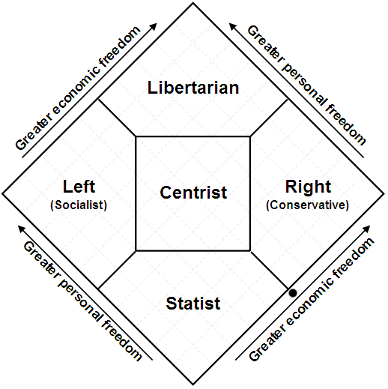There is a war in the GOP going on. Turn on the news every night, click over to any internet forum or social media platform and you’ll see the volleys of fire burning bright.
We are told by some that this war is between ‘we the people’ and ‘the establishment’. That, of course, is the line that many politicians want you to believe so you can feel like you are part of a large group of the ‘silent majority’ finally standing up against some dark room power in Washington D.C.
The truth, however, may be much different. The war isn’t between the people and the establishment. When it comes to politics, there always will be an establishment- the business of politics demand it and the nature that once one is elected in a party, he is considered part of that establishment. When one really looks at the dividing lines in this war within the GOP and what people are fighting over, rhetoric aside, the real war is an old one- the battle between the authoritarian right and the libertarian right. (For the sake of clarity, I’ll interject here I’m not referring to the Libertarian Party but the anti-authoritarian, small government libertarian mindset.) This split in the right can be visualized in the famous Nolan Chart of political thought. Just substitute statist for authoritarian. Some versions even replace this with populist.

This is the battle that Reagan fought when going up against Ford in 76 and Bush/Anderson in 80. Reagan, by today’s standards, would probably be accused of being establishment just like Bush and Anderson as he had a history of holding political office and running the business of the party. Reagan however, didn’t run his campaign as an outsider against the establishment, but on one of reducing the authoritarian nature of the GOP and giving the individual more control over his or her life.
One of Reagan’s most famous quotes sums up how he ran: “The nine most terrifying words in the English language are ‘I’m from the government and I’m here to help’”. This was in sharp contrast to the Republican Party that had long before called for a strong centralized role and government solutions to most problems.
Fast forward to the past few of decades. After the Reagan Revolution and subsequent financial booms, limited government Conservatives became complacent. They even had a huge victory in getting Clinton to sign a balanced budget and welfare reform acts- both driven by a Republican Congress even though Clinton took credit after it was shown they were successful. We then had 9/11 and our nation went into a war footing. While we rightfully looked to a strong central government to handle military conflicts, we started letting that bleed over into other areas, such as more calls for control of speech, more involvement in healthcare (Medicare prescription drug program for example), more centralized control of education (no child left behind). Slowly, the desire for a strong authoritarian Right replaced Reagan’s liberty minded Right. I’m from the government and I’m here to help became less terrifying and more a rallying cry.
This authoritarianism has led us to a path now where the government is involved in everything and both parties fight for stronger centralized control promising more or better government control of health care, more or better control of jobs, more or better control of education, the list goes on and on, with promises of the government to be here to help.
For many, the blame was laid right at the foot of what they thought were establishment deal makers ceding Conservative principles for centralized control. For the current election cycle, this has been the rallying cry of many- take back the government from the establishment.
But for the average voter, what does that mean? This is where our current battle map is. For many, the solution is Donald Trump’s populist campaign to “Make America Great Again” with promises of a wall, taxing the hell out of foreign imports, and punishing those who speak out against them. Even though the call for ‘banning Muslims’ and the government tracking them were exaggerated by the media, the reaction to the voters is what is more telling. As the politicians backed off that rhetoric, many of the supporters cheered the idea and defended it long after the candidate explained away what he really meant. In many ways, this is an understandable reaction, both coming off a war footing of the early 2000s but also that many of the issues that we think are harming us look as though they can only be fixed with a strong, centralized government.
For the libertarian minded right, all of this is terrifying. We don’t see this as the people versus the establishment, but trading one authoritarian mindset for another authoritarian mindset with a different letter behind the candidate’s name. We see this as continuing down the same path that has caused many of this country’s woes in the first place- the people ceding their personal responsibility and rights to a strong central authority. The only thing different between some candidates on the Right versus the Left in regards to this is simply the specific issue- yet both are promising the same thing, stronger centralized authority and a government who is here to fix things for you.
When someone says #NeverTrump, they aren’t siding with the establishment nor are they rooting for a Democrat win. They are fighting against what they see is the continuing of a long march towards tyranny with an ever growing centralized government. ‘Us versus the establishment’ is just a marketing ploy. The establishment will always be around as long as there is someone who is willing to make a deal.
The war isn’t against an establishment; it is about what philosophy defines the Right.